Forget velocity, the curveball's resurgence is changing modern pitching

Terrifyingly beautiful, like summer thunderstorms and whitewater rapids, the curveball of Astros pitcher Lance McCullers can be found at the intersection of violence and wonder. It is a demon he unleashes on hitters, especially with two strikes, when he throws it 68% of the time.
He takes the nail of his right index finger and places it into the seam of the baseball where it curves around the MLB logo. He places his middle finger directly over the long seam. He places his thumb on the bottom of the ball, over another seam.
Seams are held in triplicate. Seams beget grip. Grip begets force.
“I just try to rip over it and throw it as hard as I can,” McCullers says. “It’s an aggression pitch for me. It’s called an off-speed pitch, but I don’t view it that way.”
The middle finger applies tremendous pressure on its seam, the nail of the index finger applies only a bit of pressure, and the thumb, a lazy hitchhiker along for the ride, applies none. When the process works perfectly, it takes only the split second when the ball has just left McCullers’s hand—as his head snaps to the side, as the ball starts to spin at 2,850 revolutions per minute and as the fastest curveball in the majors among starters flies up to 88 miles per hour—for McCullers to know the poor batter is toast.
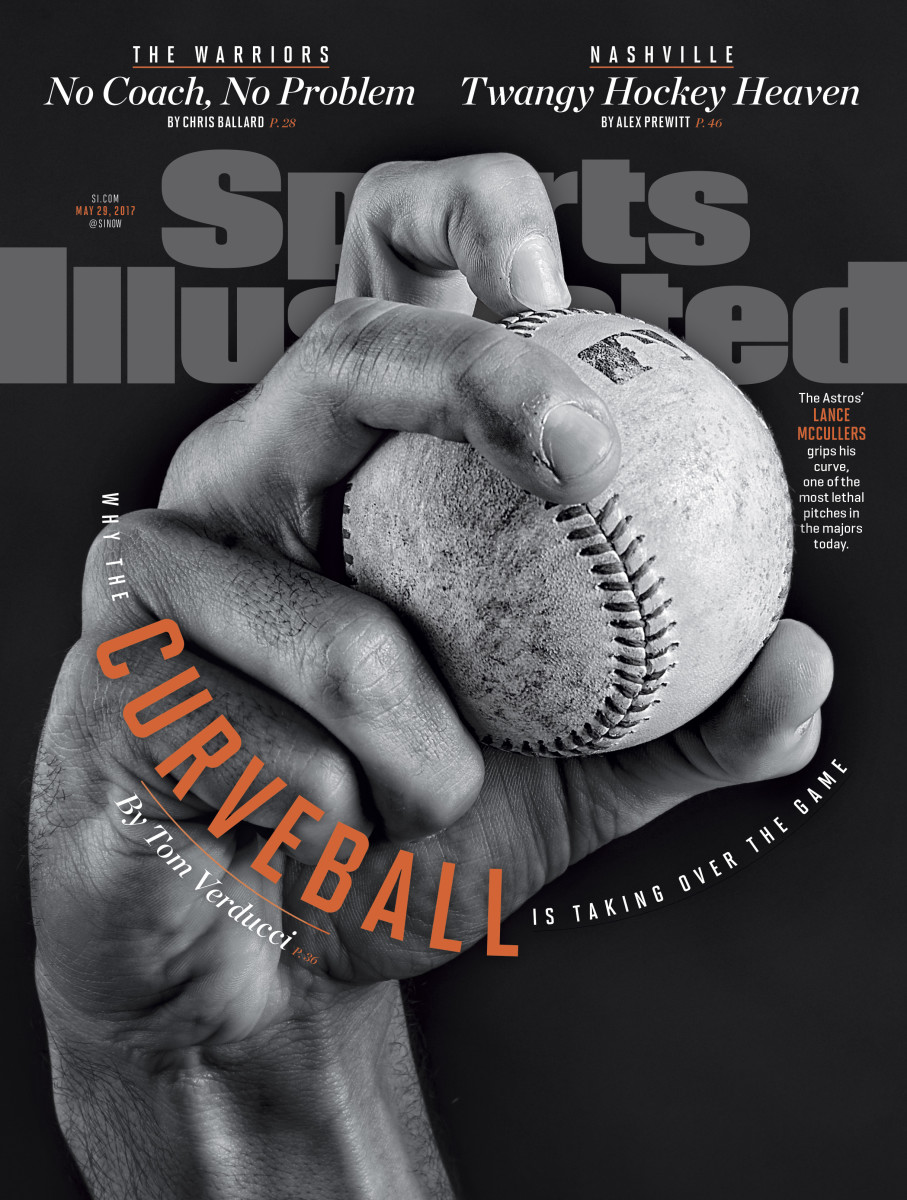
“I feel it come off my hand and I know it’s most likely going to result in a punch-out,” he says. “A hitter knows off the hands when the ball hits his sweet spot and it’s going to be a homer. I have that feeling when it comes out of my hand. Like, This is a really quality pitch.”
He smiles fiendishly.
“And then I start fading toward the dugout sometimes,” he says.
Even as the ball leaves his hand, even before it completes its 55-foot thrill ride, the last 10 of which are a stomach-turning, Coney Island drop, even before the doomed batter swings at where the demon used to be—McCullers knows how it will end.
*****
No pitch has ended more aspiring careers than the curve. As former Kentucky congressman Ben Chandler once said on behalf of the great diaspora who know the feeling too well, “I was planning to be a baseball player until I ran into something called a curveball.”
No pitch causes major league hitters to freeze more often. No pitch has inspired more legends, myths, fear, grips, nicknames, and ooohs and aaahs. It is a wonder of physics, geometry and art, a beautiful, looping arc through space made possible by the interplay between gravity and the Magnus force—a result of the flow of air around the spinning sphere—that often leaves us, and the hitter, paralyzed in wonderment.
This season marks the sesquicentennial anniversary of the first curveball (and its first controversy). So it’s fitting that McCullers and the red-hot Houston Astros are at the forefront of a revolution in pitching. Spin is in. Thanks partly to technology and the ubiquity of high velocity, the curveball is enjoying a very happy 150th birthday.
The 30: Nationals lead latest NL power rankings, but some unlikely teams enter the top 10
The Astros soared to the best start in franchise history (29–15) by throwing 14.1% curveballs, a regimen exceeded only by the White Sox (16.6) and the Red Sox (14.6) and Indians (14.2%). Houston ranks next to last in percentage of fastballs thrown (47.3). “I joke with the guys that the four-seam fastball is a dying pitch,” McCullers says.
He’s only half-joking. Even though velocity keeps increasing (the average fastball velocity, now at 92.7 mph, is up for a seventh straight year), the number of fastballs keeps declining. Since 2002, when Pitch F/X technology began capturing pitch data, the percentage of fastballs has declined from 64.4% to 55.4%. Houston is one of four clubs to turn conventional pitching wisdom on its ear by throwing fastballs with a minority of its pitches.
The Astros, who led the majors in curveball usage last year, have built a rotation around ace Dallas Keuchel, whose 79-mph slider acts like a short curveball, and curveball specialists McCullers, Charlie Morton, Mike Fiers and the injured Collin McHugh. Their success follows on the heels of a 2016 season in which major league pitchers threw about 9,000 more curveballs than in ’15, and the pennant-winning Indians relied heavily on curves in their postseason run.
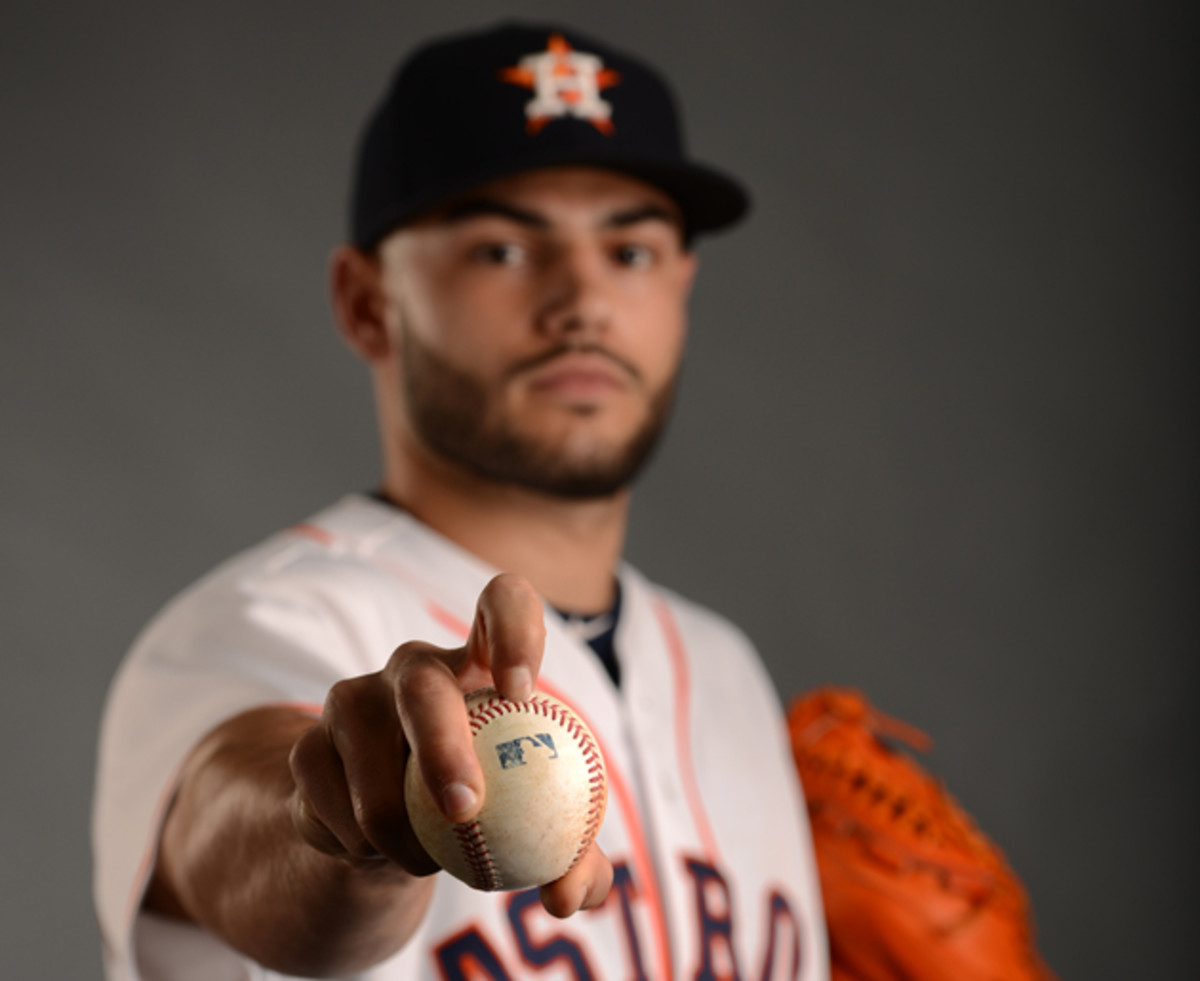
“It’s easier these days to find guys with good fastballs, because there are a lot of guys who throw in the mid-90s and high 90s,” says Houston general manager Jeff Luhnow. “But finding a guy who can actually spin a ball, it’s a skill teams are looking for more now because it’s a differentiating factor. If you can find a guy that can throw hard and spin a ball, that usually bodes well.”
Said one NL general manager, “Three teams have become big, big believers in the combination of high fastballs and curveballs: the Astros, Dodgers and Rays. Those teams are heavy into analytics. The game is changing away from the sinker/cutter/slider guys.”
In the early going, overall curveball usage is down slightly from last year (10.2% to 10.0), but the teams and individuals who buy into curveballs are putting a greater emphasis on the pitch. Among veteran pitchers throwing a career-high percentage of curveballs (which includes the knuckle curve) are Drew Pomeranz of Boston (45%), Alex Cobb of Tampa Bay (36%), José Quintana of the White Sox (32%), James Paxton of Seattle (20%), and Rick Porcello of Boston (19%).
They have followed the recent lead of pitchers such as Clayton Kershaw and Rich Hill of the Dodgers and McCullers, who have found success by throwing more breaking balls and fewer fastballs. There are also craftsmen with outlier curveballs like Gio Gonzalez of Washington, who throws a four-seam curveball his father showed him alongside their Hialeah house at age 13; and A.J. Griffin of Texas, who throws one of the slowest (68 mph) and biggest-dropping (nine inches) lollipops in the game. Confidence in curveballs has grown as technology began to measure the pitch’s spin rate, spin axis, velocity, horizontal and vertical break—and how much trouble hitters have hitting it.
Is Jose Berrios ready to be the Minnesota Twins' ace?
“The data is showing, if the curveball is your best pitch, use it more often,” says manager John Farrell of the curveball-mad Red Sox. “It used to be that if you threw less than 60% fastballs, you were not going to start. That’s gone out the window.”
Says McCullers, “I don’t view my curveball as complementary stuff. Whereas old school was more like, ‘No, establish the fastball, pound the heater and wait until they prove they can hit it.’ Well, what if I have two guys on and I’m trying to establish my heater, and he hits it out of the ballpark? You saw it in the postseason: Now it’s about pitchers challenging guys with their best pitch, and that means a lot of curveballs.”
*****
The legend of the first curveball starts like this: In the summer of 1863 a 14-year-old boy named William Arthur Cummings experienced a eureka moment one day while tossing clamshells along a Brooklyn beach with some buddies. “All of a sudden it came to me that it would be a good joke on the boys if I could make a baseball curve the same way,” Cummings later wrote.
Four years of practice later, Cummings, then pitching for an amateur Brooklyn team as a 5' 9", 120-pound righthander, broke out his new pitch in a game against Harvard University on Oct. 7, 1867. Harvard won 18–6, but Cummings rejoiced in the success of his curveball, later writing, “I could scarcely keep from dancing with pure joy.”
By then Cummings had earned the nickname “Candy,” a Civil War–era honorific that denoted the best at his craft. Cummings pitched 10 years before a sore arm sent him off to a career in painting and wallpapering.
Other pitchers of that era, including Fred Goldsmith, also claimed to have thrown curveballs, but Cummings defended his legend as its inventor so often and so well that in 1939, 15 years after dying, he was enshrined in the Hall of Fame with a plaque that reads, “Invented curve as an amateur ace of Brooklyn Stars in 1867.” His enshrinement came five weeks after Goldsmith went to his grave clutching an 1870 newspaper clipping that he insisted proved he was the original curveball artist.
From Candy to Sandy (Koufax) to the Dominican Dandy (Juan Marichal), the curveball gained mythic status, partly because it relied on folklore, not empirical evidence as with fastballs and their easily understood miles per hour.
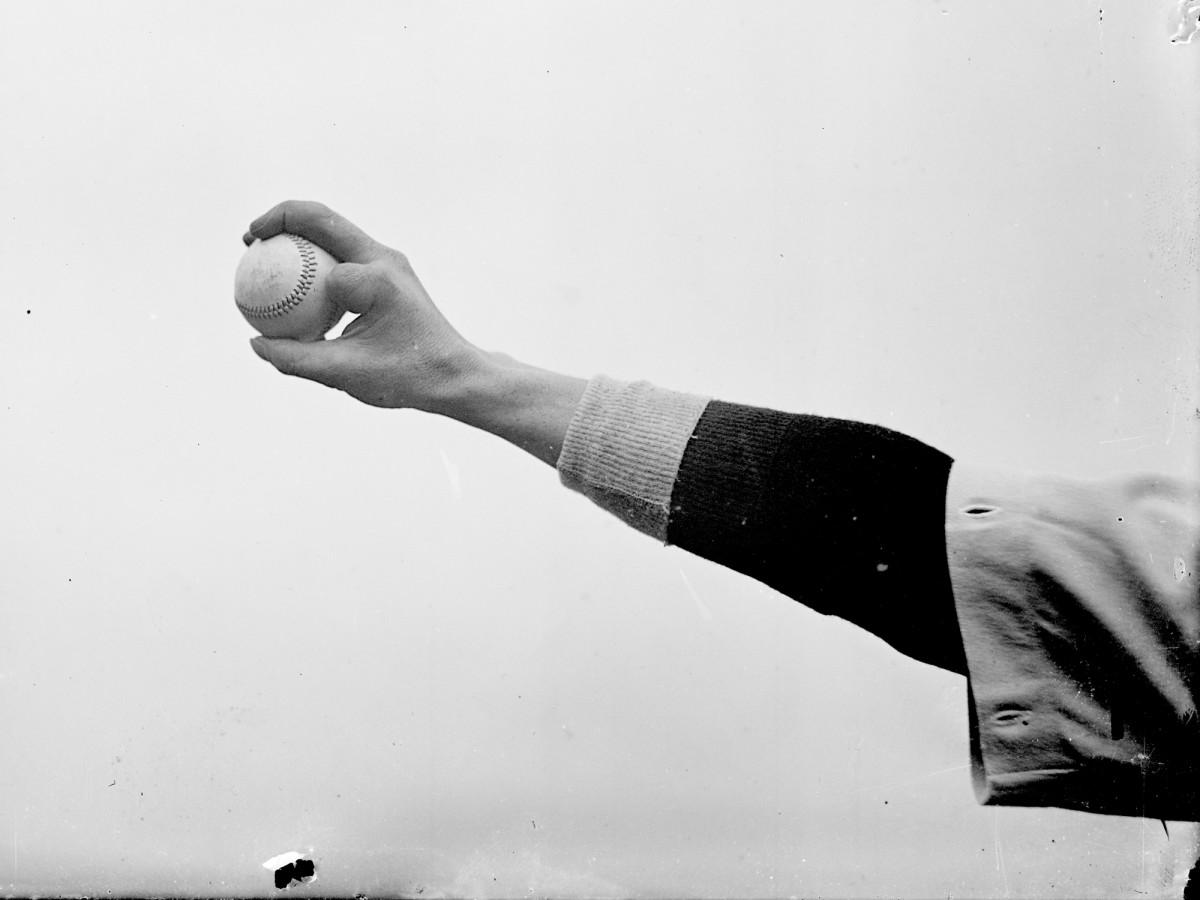
Dead Ball era ace Mordecai (Three Finger) Brown flummoxed hitters with a curveball that spun crazily out of a make-do grip: He had lost part of his right index finger in a threshing-machine accident, mangled his middle finger chasing a rabbit and had no use of his pinky. No less a hitter than Ty Cobb called Brown’s curveball the most devastating pitch he ever saw.
Stan Musial had similarly high praise for the curveball of “Toothpick” Sam Jones, an intimidating 6' 4" righthander who pitched from different arm angles and snorted like a horse (because of a sinus condition). “Sam had the best curveball I ever saw,” said Musial, who batted .122 in 49 at bats against Jones.
Other legendary curveballs belonged to Camilo Pascual, who earned Ted Williams’s praise as owning “the most feared curveball in the American League for 18 years”; Koufax, who generated outrageous spin by throwing his curve with four seams rather than the standard one or two; Bert Blyleven, who threw his curve with so much force that one of his catchers, Phil Roof, could hear Blyleven’s middle finger snap against his palm; and Dwight Gooden, who threw such a majestic curveball that Mets announcer Ralph Kiner, riffing on players’ slang term for the pitch, Uncle Charlie, upgraded it to a Lord Charles. A modern master, Adam Wainwright, adopted “UncleCharlie50” as his Twitter handle.
The break of a well-thrown curveball holds illusory power. All pitches pass from a hitter’s central vision—two eyes tracking its path—to his peripheral vision as the ball gets closer to the plate. (Pitches move too fast and too near for central vision to track it all the way to the bat.) The curve moves the most just as it passes from a hitter’s central vision to his peripheral vision, which means the hitter swings at where he thinks the pitch is headed, not where it actually is.
The derivation of Uncle Charlie is unclear, but more easily understood nicknames for the curve are “bender,” “hook,” “unfair one,” and “deuce” (in honor of the universal two-finger signal from the catcher). Less obvious are two nicknames derived from the Northern flicker (Colaptes auratus), a woodpecker with a curveball-like swooping path to its prey: yellowhammer (the bird’s nickname) and yakker (derived from yawker, another term for the bird).
Legendary baseball announcer Vin Scully added to the curveball lexicon on March 9, 2008, when the Dodgers brought a 19-year-old minor league pitcher into a spring training game in Vero Beach, Fla. The pitcher caught Boston first baseman Sean Casey looking at such a rainbow of a pitch for strike three that Scully gushed, “Oh, what a curveball! Holy mackerel. He just broke off Public Enemy No. 1.” It was most viewers’ first introduction to the frightful plunge of the Clayton Kershaw curve, a classic 12-to-6.
Kershaw is the current King of Curves. He throws his hook with a traditional grip, only with his middle finger along the outside of the long seam rather than directly on it. Kershaw has thrown 3,863 curveballs in his career and allowed only nine home runs on it, with a ridiculously low .127 batting average on the pitch.
Oddly, there is almost nothing spectacular about the metrics of Kershaw’s curve. It spins (2,373 rpm) more slowly than the average curve (2,500), and also travels (73.3 mph) more slowly than average (77.8). The wizardry of Kershaw’s curve is in how much it resembles a fastball out of his hand. Kershaw throws each pitch from an identical release point, depriving hitters of an early “tell.”
Kershaw also disables hitters’ second level of decoding: the reading of spin. Four-seam fastballs have true backspin; they rotate so fast over the poles of the baseball that no spin is discernible. The ball appears as a gray circle. Curveballs rotate in the opposite direction—they have topspin—but slow spin or a tilted-spin axis can reveal to the hitter streaks of red across the gray circle, a tip-off from the spinning seams that the pitch is a breaking ball.
Kershaw spins his curveball at a similar rate to his fastball (2,326 rpm). Though they spin in opposite directions, because he throws both with a true overhand delivery, creating pole-to-pole rotation, the pitches first look exactly alike to a hitter: a gray circle. The four-seamer holds its plane while the Kershaw curve can drop nine inches.
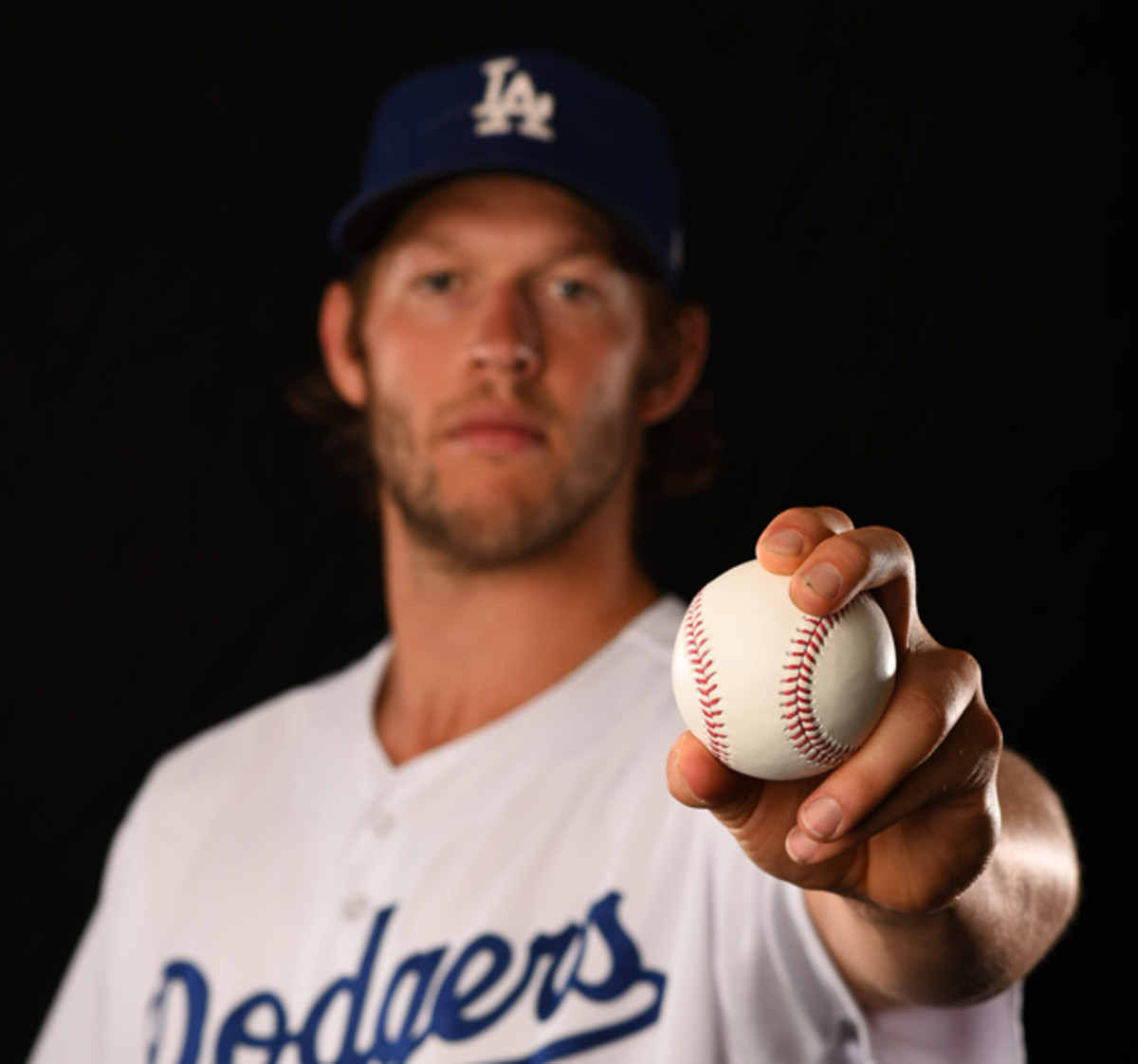
“My only thought with my curveball is location,” Kershaw says. “I throw it the same every time. So it’s just a matter of whether I want to throw it for a strike or throw it in the dirt. That’s really about it.
“It’s tough to teach people. Based on the way you were born and the way you throw a baseball is the way your curveball is going to break.”
So inscrutable is the magic of a curveball that it is accepted wisdom in the game that, while pitchers can learn to sink a baseball (with a two-seamer) and cut it (with a cutter or slider), they generally cannot learn how to throw a great curve. It is not a projectable pitch. Organizations have learned that if someone does not show an aptitude to spin the baseball as an amateur, it’s foolish to expect him to acquire the skill.
Says Luhnow, “Yes, I agree, which is why there’s a lot of focus in the amateur world on finding guys who can spin a baseball. It becomes the differentiating factor. It’s not impossible to teach, but it is harder to teach than a slider.”
*****
There is an old saying in baseball: “Don’t throw a curve until you shave.” The long-held belief is that the action of imparting spin on a baseball increases stress on the elbow, especially for young pitchers whose growth plates have not closed.
This is a myth. There is no scientific evidence to show that curveballs for young pitchers are more dangerous than fastballs (as with all pitches, fatigue and poor mechanics are the biggest risk factors). A study by the American Sports Medicine Institute in Birmingham in 2011 found no relationship between throwing curveballs at a young age and any increased risk of arm injuries in young players.
The “shave” rule has not applied to some of the greatest curveball practitioners. Blyleven, following his father’s advice, began throwing his curveball at 13. Kershaw was 11. Pascual began throwing his curveball in Cuba when he was 10. Wainwright learned his when he was nine, from his older brother, Trey. Barry Zito learned his hook when he was seven, and fired curveballs into a mattress with a strike zone painted on it.
Yankees promote top prospect Gleyber Torres to Triple A, increasing odds of 2017 call-up
Pomeranz, the Boston lefthander, picked up his curve at nine, and his story illustrates how metrics are changing pitching today. Pomeranz’s father, Mike, learned a unique curveball grip from a coach when he was in high school: He held one seam with the knuckle of his index finger and flicked the ball forward. There was no cranking of the elbow or wrist, not even the usual turning of the hand so that the side of the pinky faces the batter and snaps down upon release. Drew would perfect the technique while sitting on a couch, flicking the ball into the air over and over.
Pitching in the conventional fastball-first style, Pomeranz bounced from Cleveland to Colorado to Oakland to San Diego before a 2016 spring training meeting with Padres manager Andy Green and general manager A.J. Preller changed his career. They told him statistics showed that the more he threw his curveball, the better he pitched. They told him to feature the pitch.
“I just kept throwing curveball after curveball, and guys weren’t hitting it,” Pomeranz says. “They kept swinging over it and taking it for a strike. So I just kept throwing it more and more.”
Pomeranz became a 2016 All-Star for San Diego before his trade to the Red Sox. His ERA dropped from 4.07 before the change to 3.62 since. He has given up only five home runs on more than 2,000 curveballs over the past four years.
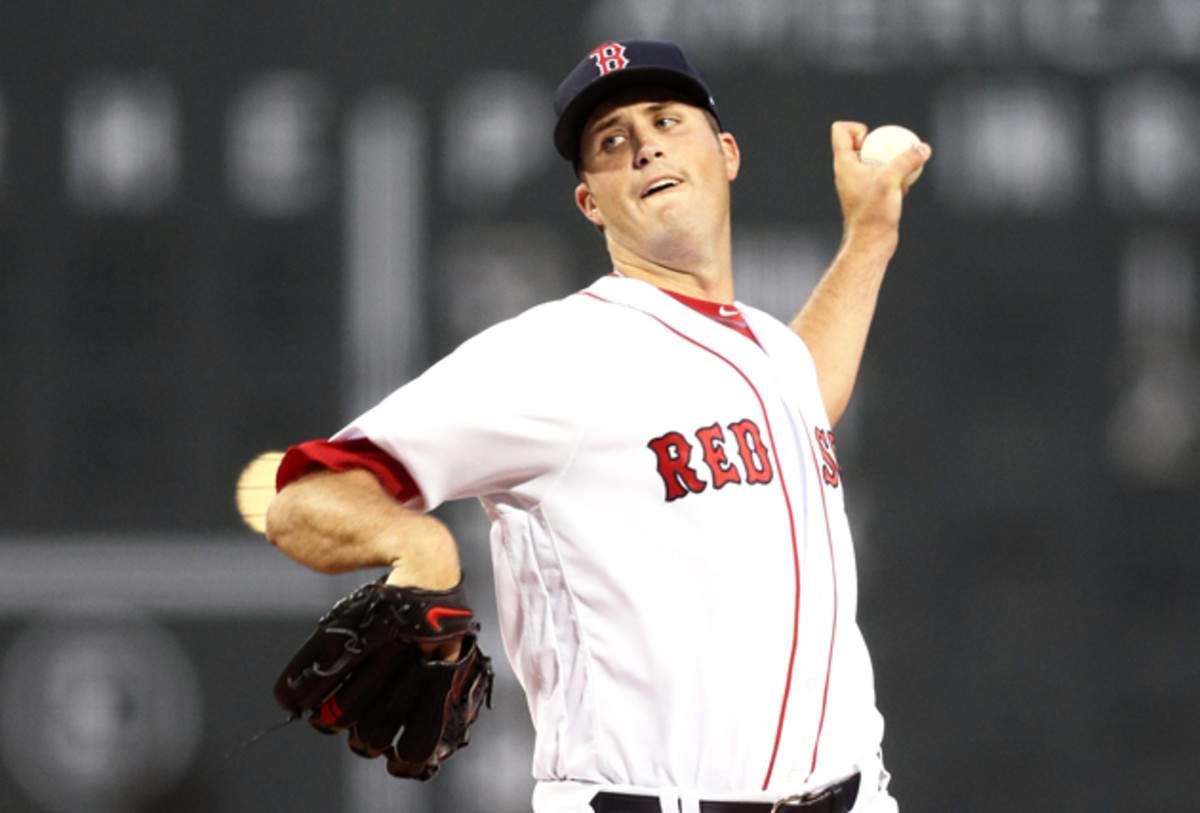
Pomeranz says, “Growing up or in college, somebody [on the other team] would call you a thumber or yell at you for throwing so many curveballs. But now I’ve gotten to the point where I’m like, ‘I don’t care. If you’re not hitting it, you can call me anything you want.’ ”
One of the stranger elements to Pomeranz’s curve is its low spin rate—just 2,142 rpm, a function of his knuckleball-like flick upon release. As teams collect more data from new technology, they generally equate higher spin rates with better curveballs.
According to MLB’s Statcast data last year, curves that spun faster than 2,600 rpm generated a lower batting average (.196), weaker contact (86.8-mph exit velocity) and more misses per swing (32.2%) than curves below 2,600 rpm (.225, 87.7 mph and 30.2%). Spin rates for curveballs have become just as much of a scouting tool as radar-gun readings for fastballs. The Astros, for instance, rescued McHugh and his 8.94 ERA from the scrap heap before the 2014 season because his high-spin curveball caught their attention. They took away his sinker and made him a predominantly four-seamer/cutter/curveball pitcher. From 2014 through ’16, McHugh won more AL games, 43, than any pitcher except Cy Young winners David Price, Porcello, Corey Kluber and Félix Hernández.
“That’s a success story,” Luhnow says. “I’ve had the opposite as well, where you think you can change the mix, then once you have the player, he’s not capable or doesn’t want to make the change.
“The one takeaway for me [from the data] is you can have a high spin rate with nice shape, but if you can’t throw it right where you want to throw it, it’s still not going to be a valuable pitch for you. You’re not going to throw it in meaningful counts. But if you have reasonable command, it can be a true weapon.”
*****
Last Aug. 2, McCullers left a start against Toronto with inflammation in his elbow, which was diagnosed as a strained ligament. He did not pitch again the rest of the season. McCullers’s agent, Scott Boras, was concerned that the pitcher’s frequent use of his power curveball was taking a toll on his elbow. So Boras brought McCullers to Neal S. ElAttrache, an orthopedic surgeon in Los Angeles.
ElAttrache examined McCullers. He asked him to demonstrate how he threw his curveball. Boras expected ElAttrache to tell McCullers to throw more fastballs. Instead, the doctor told McCullers to keep on snapping hooks.
“He thought the way my arm moves and the way I throw it and hold it, I actually do the least amount of damage to my ligament,” McCullers says. “I’m not manipulating the ball with my wrist. That’s where a lot of people get into trouble. I’ve got my wrist set, I’ve got my grip and I throw it right over the top like a heater. I’m letting it pronate the way it’s supposed to.”
The first time he took the mound this year McCullers threw 60% curveballs. He has increased his average curveball velocity to 86.2 mph; the average fastball velocity in 2002 was 89 mph.
The dirty little secret in this age of advanced velocity is that major league hitters are seeing fewer fastballs. At the current rate, this year they will see about 50,000 fewer fastballs than they did in 2002. Spin, not velocity, is the new currency of pitching.
To understand this change in traditional pitching principals, just watch McCullers when he reaches a full count on a hitter. The full count is the batter-pitcher matchup pushed to its limit. It used to be the baseball equivalent of a Dodge City showdown at high noon. It was the time for a pitcher’s best heat, and both sides knew it.
This year McCullers has thrown 42 full-count pitches—and 35 of them have been curveballs. Hitters are 2 for 21 against curves that ended those at bats. “This is my best pitch,” he explains, “and this is what I’m attacking you with.”
The baseball world is spinning faster and faster. In the name of Candy Cummings, it’s not just folklore. In the three seasons under Statcast, the average curveball spin rate has increased from 2,316 rpm to 2,473 to 2,500. You should forgive hitters if they don’t wish a happy 150th anniversary to their longest-running nightmare.
